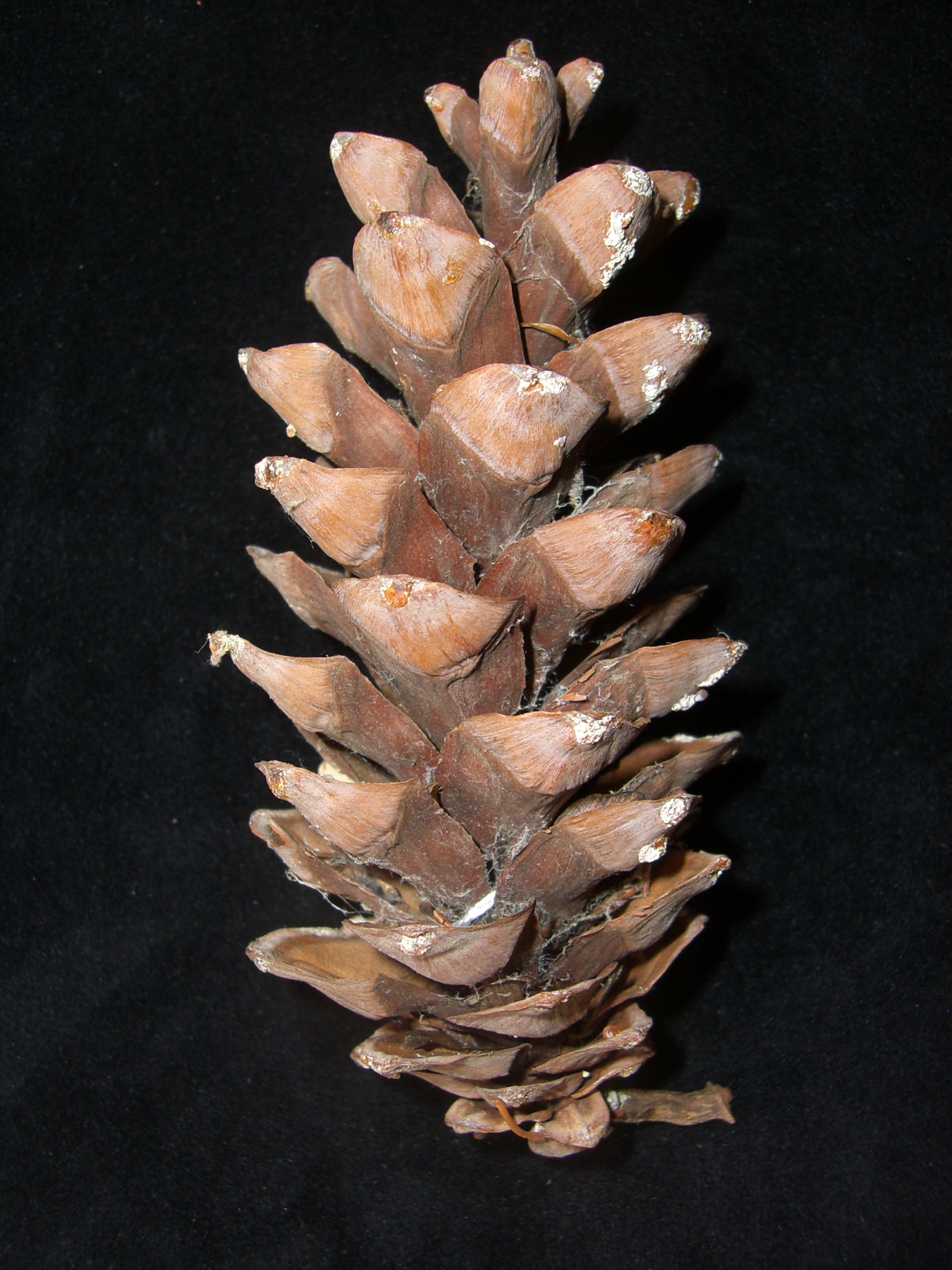
Tree to 35 m or so tall; foliage in clusters at end of whorled, horizontal branches. Bark deeply fissured. Buds c. 5-8 mm long, narrow-ovoid, hardly resinous, scales strongly flattened down. Young shoots slender, greenish-brown with some hair in tufts at the base of the leaf bundles. Leaves in 5's, 5-13 cm long, soft, straight, slender, blue-green, pale on the inner surface; sheaths deciduous, soon falling away and may be seen as chaffy matter at the base of young shoots. Cones solitary, cylindric, slender and often curved, 8-16 cm long, 2.5-4 cm wide on stalks to 2.5cm long; scales thin and flat. Seeds mottled, 8-9 mm long, wing c. 2.5 cm long.
Grows naturally in sandy or fertile soils, often at the edges of watercourses and occasionally in swamps. Naturalised on the North and South Islands of New Zealand.
E North America
An important timber tree of the NE USA.
Soft cones; similar to P. wallichiana but with shorter leaves and cones (which are often curved), and tufts of hairs at the base of leaf bundles of first year shoots (visible with a hand lens).
NSW: Batlow (Pilot Hill Arboretum); Mt Tomah (Bot. Gds); Sydney (Royal Bot. Gds). VIC: Dandenongs ('Pirianda'); Creswick (School of Forestry grounds); Maroondah dam (slopes of approach road).
P. lambertiana Douglas, Sugar Pine from California and Oregon is also similar to P. strobus but has massive pendent cones 30-60 cm long (the longest of any pine), with stalks over 6 cm long, brown bark, young shoots glandular downy, leaves rigid and sharp pointed with a twist completing a full turn. Specimens may be seen in New South Wales plantations on the way to Pilot Hill Arboretum near Laurel Hill, Batlow, and also labelled in the arboretum along Ash Walk planted in 1925. A mature tree may also be seen at Currango Homestead near Lake Tantangara. The first planting of this species was in 1924 in a plantation at Jounama near Kiandra, New South Wales where they can still be seen.
Source: (1995). Pinaceae. In: . Horticultural Flora of South-eastern Australia. Volume 1, Ferns, conifers & their allies. The identification of garden and cultivated plants. University of New South Wales Press.

Leaves yellowish when young. Old cultivar.
Stem, branches and branchlets twisted. Origin usa c. 1930's.
Dwarf variant growing to c. 50 cm in 10 years. rare. Origin unknown.
Narrow, conical to columnar, branches erect. Old German cultivar.
Roundish open bush with thick stems, and long needles. Bluish leaf colour, due to striping, pronounced. Originated from witches broom discovered by w Gotelli and g Erle, Macopin, New Jersey, usa.
Low, hemispherical bush with dense branching system and short leaves. A selection, by a.j. Fordham and h.j. Welch, from seedlings of witches brooms, 1974.
This name serves as a group name for an increasing number of similar miniature clones now becoming available.
A group name used for small, extremely slow-growing forms.
Upright tree with the bluish leaves tipped milky white. Possibly identical to and better known as 'Alba'. Old German cultivar.
Dwarf, rounded plant with short needles; may lose dwarf habit. Selected from seedlings growing in Durand Eastman Park, Rochester, New York, usa.
Branches pendulous, hanging to the ground. Old cultivar from UK.